Christopher Morley enters the scene
Finding Bliss in Ysleta, Part 3
We are on the far turn and coming into the home stretch on this detailed discussion of the Edwin Bliss Hill leaflets printed for Vincent Starrett. Let’s get going.
Sherlockiana: Two Ballads in Praise of Sherlock Holmes by Carolyn Wells and Michael Gross. Nov. 1, 1937.
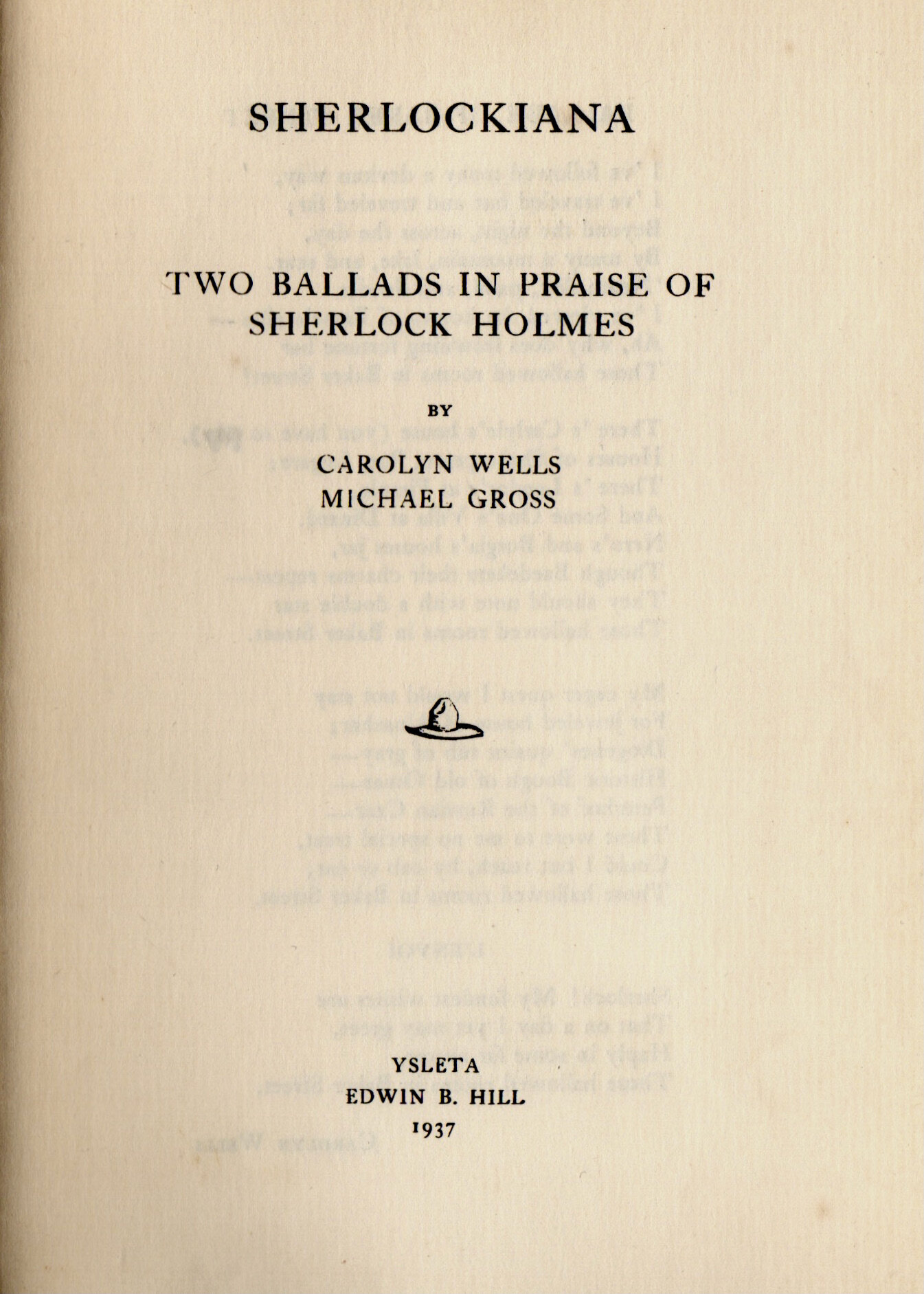
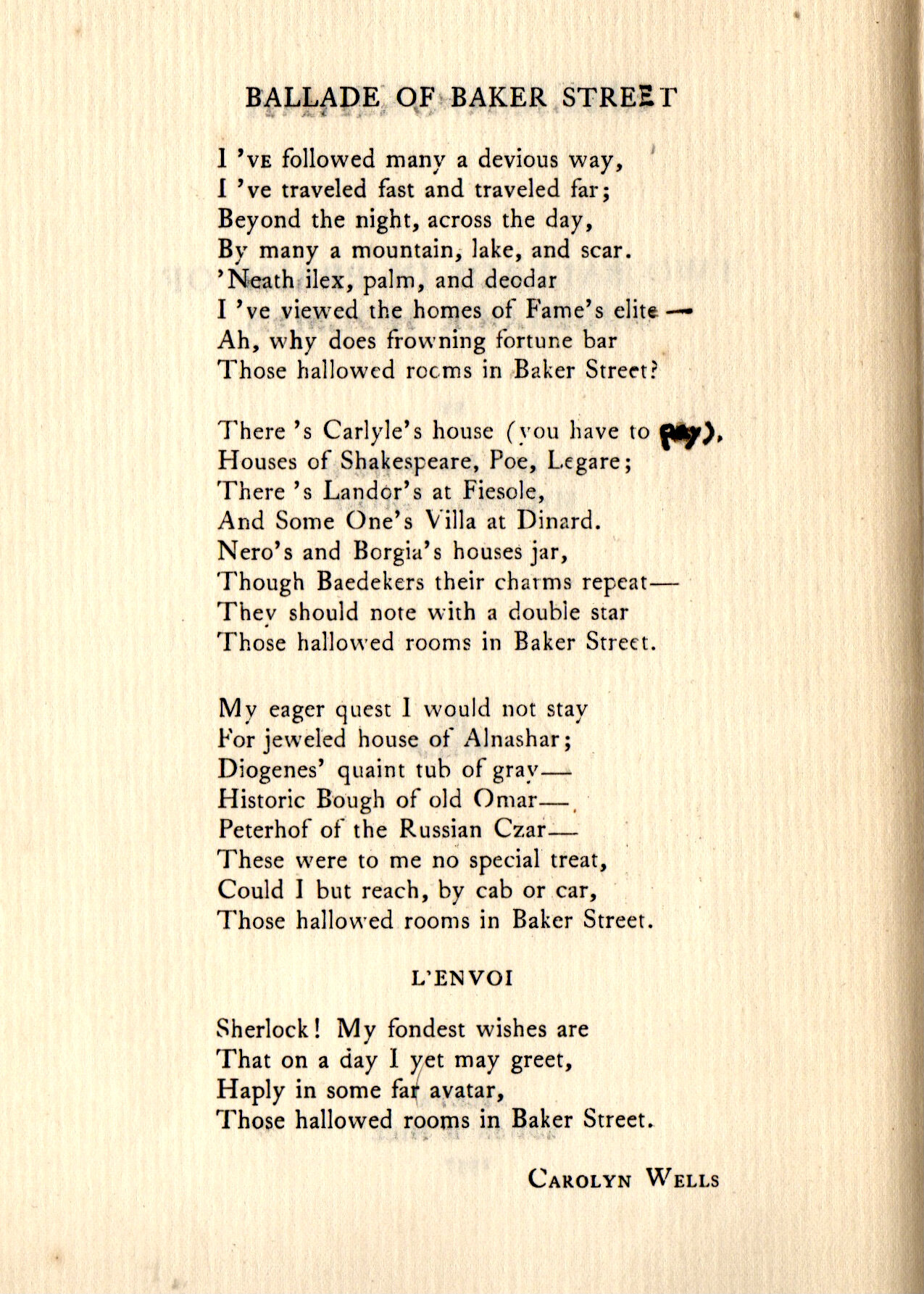
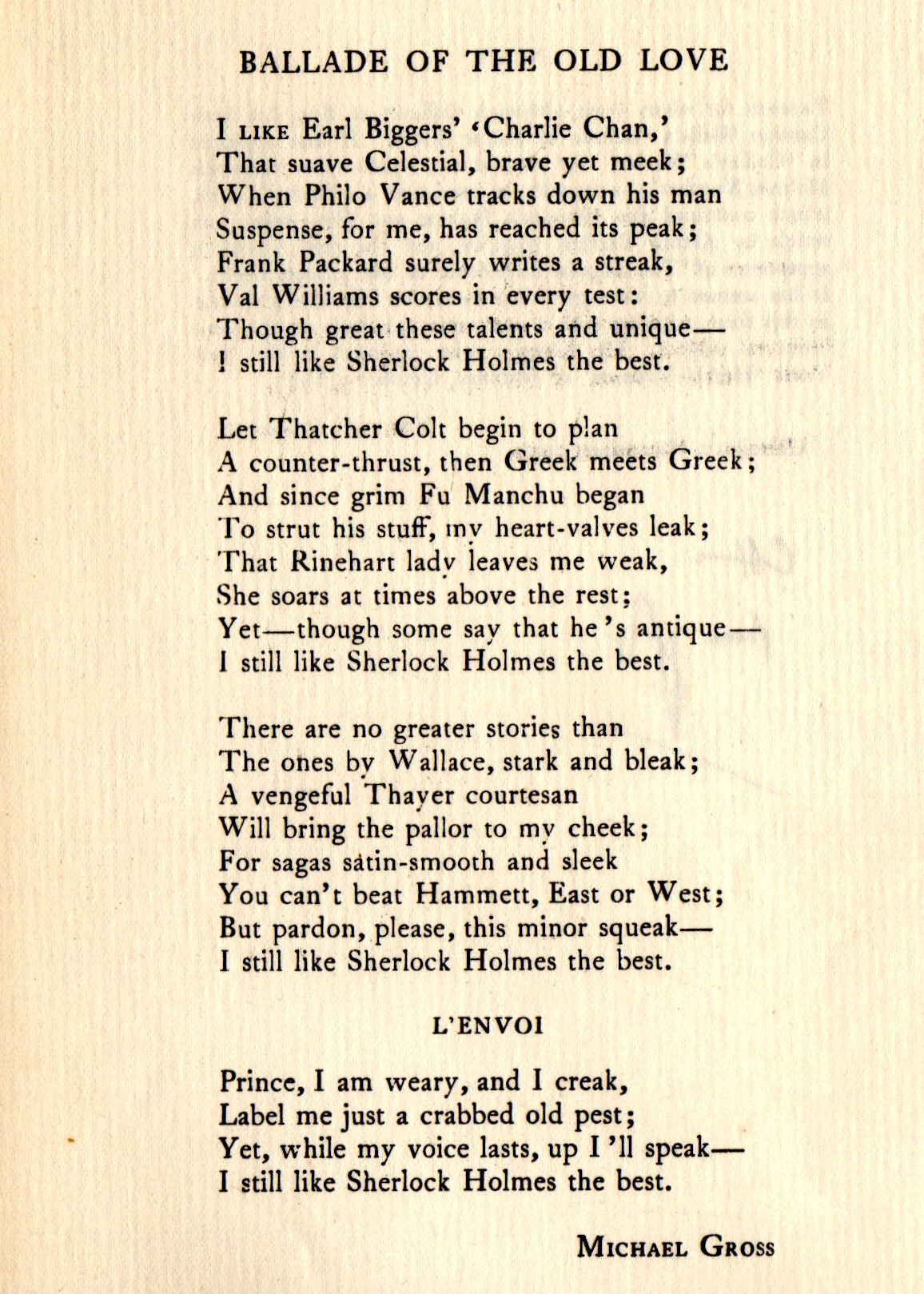
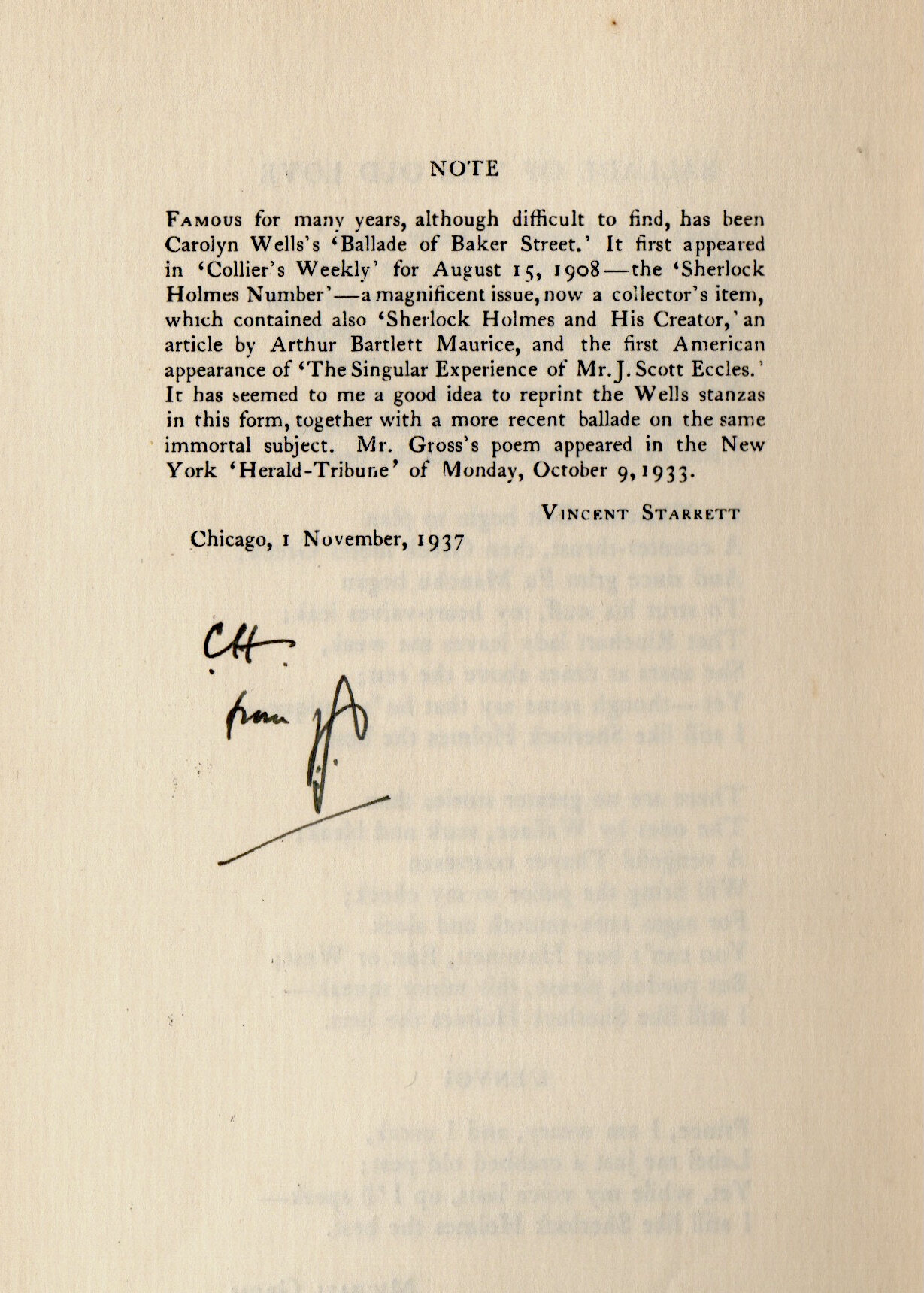
In 1937, Starrett came back with a leaflet containing two ballads that are largely unknown today. Only 37 copies were printed.
Wells’ “Ballade of Baker Street” first appeared in the August 15, 1908 issue of Collier’s Weekly, which is headlined, “The Sherlock Holmes Number.” The magazine contains the first half of the story we now know as “The Adventure of Wisteria Lodge,” and a highly evocative Frederic Dorr Steele illustration on the cover, among other Holmes-related pieces.
The prolific Wells wrote poetry, children’s books, mysteries and humor and is credited with authoring 170 books. Here, she goes in search of “Those hallowed rooms in Baker Street.”
The poem is unusual in that it contains a typo, which you can see was fixed in Starrett’s hand in this copy. The next year, it looks like Hill and Starrett reprinted Wells’ poem, perhaps to repair the typo. I don’t own a copy of what I believe to be that reprint.
Starrett tells us that the poem by Michael Gross first appeared in the October 9, 1933 issue of The New York Herald-Tribune. I couldn’t find out much more about Gross, except for a few other poems that are non-Sherlockian in nature. For what it’s worth, “Ballade of the Old Love” was also published in the Harrisburg (PA) Sunday Courier on Oct. 15, 1933. There may be others.
Sherlockiana: My Favorite Fiction Character by Stephen Vincent Benét. June, 1938.
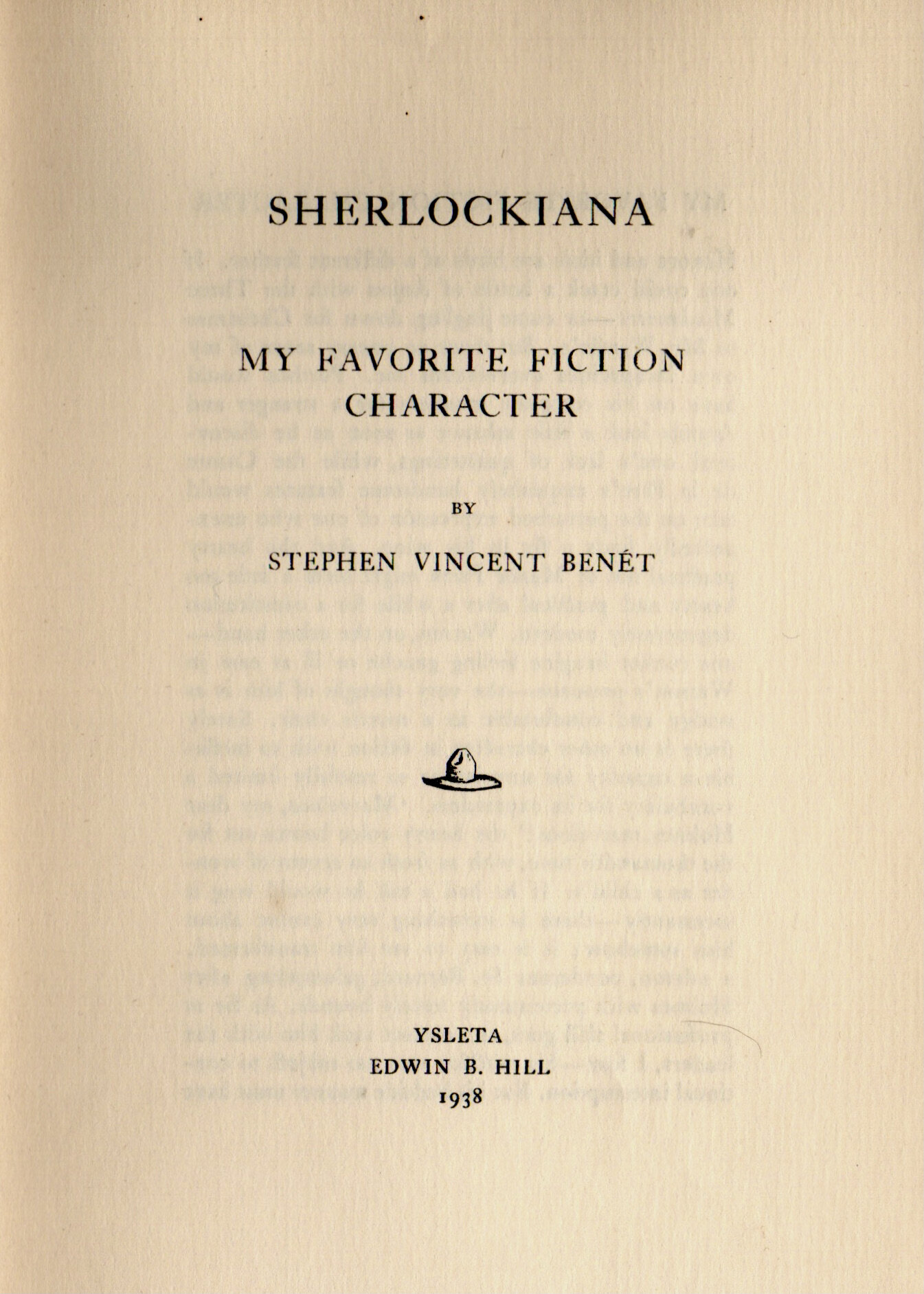
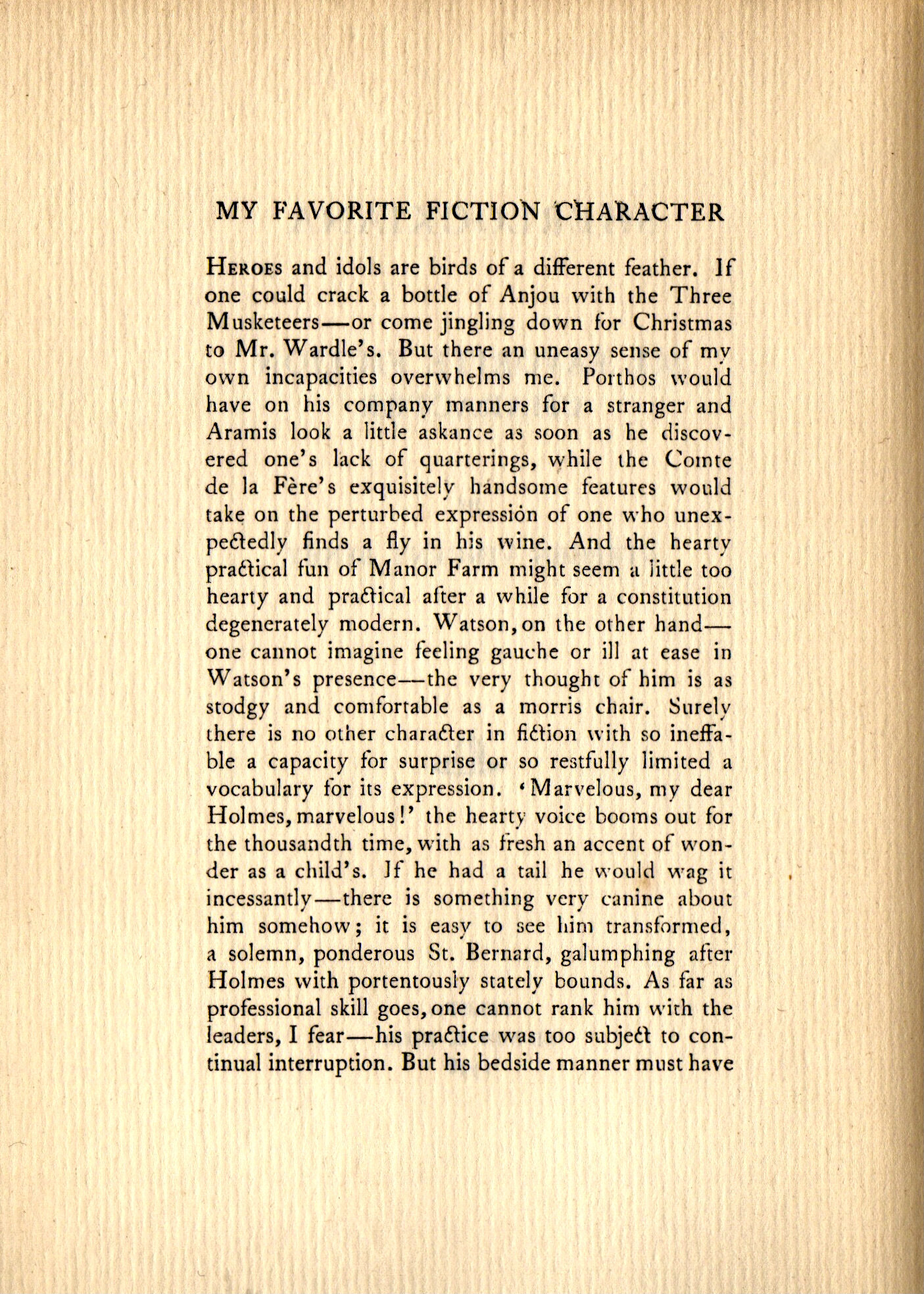
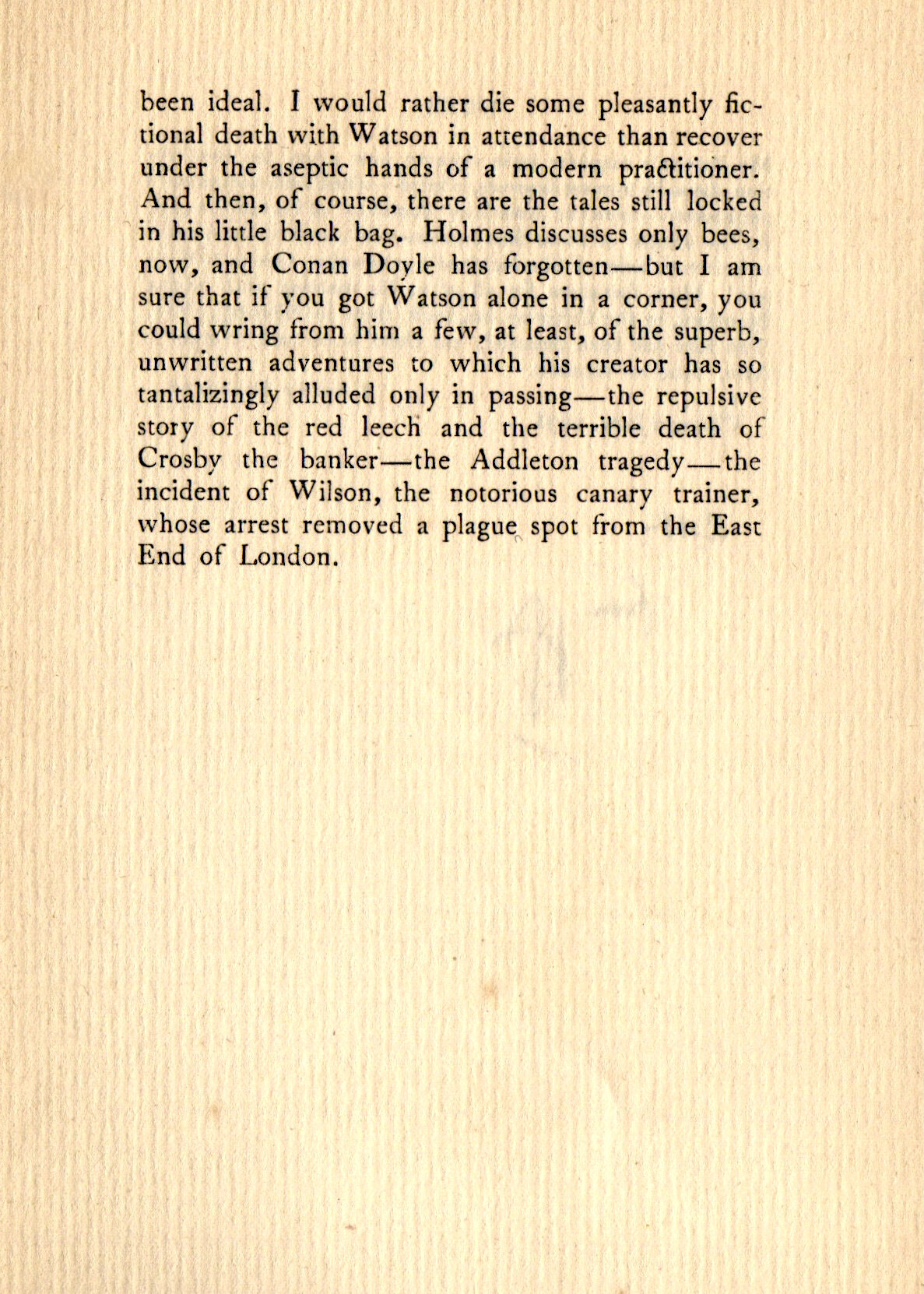
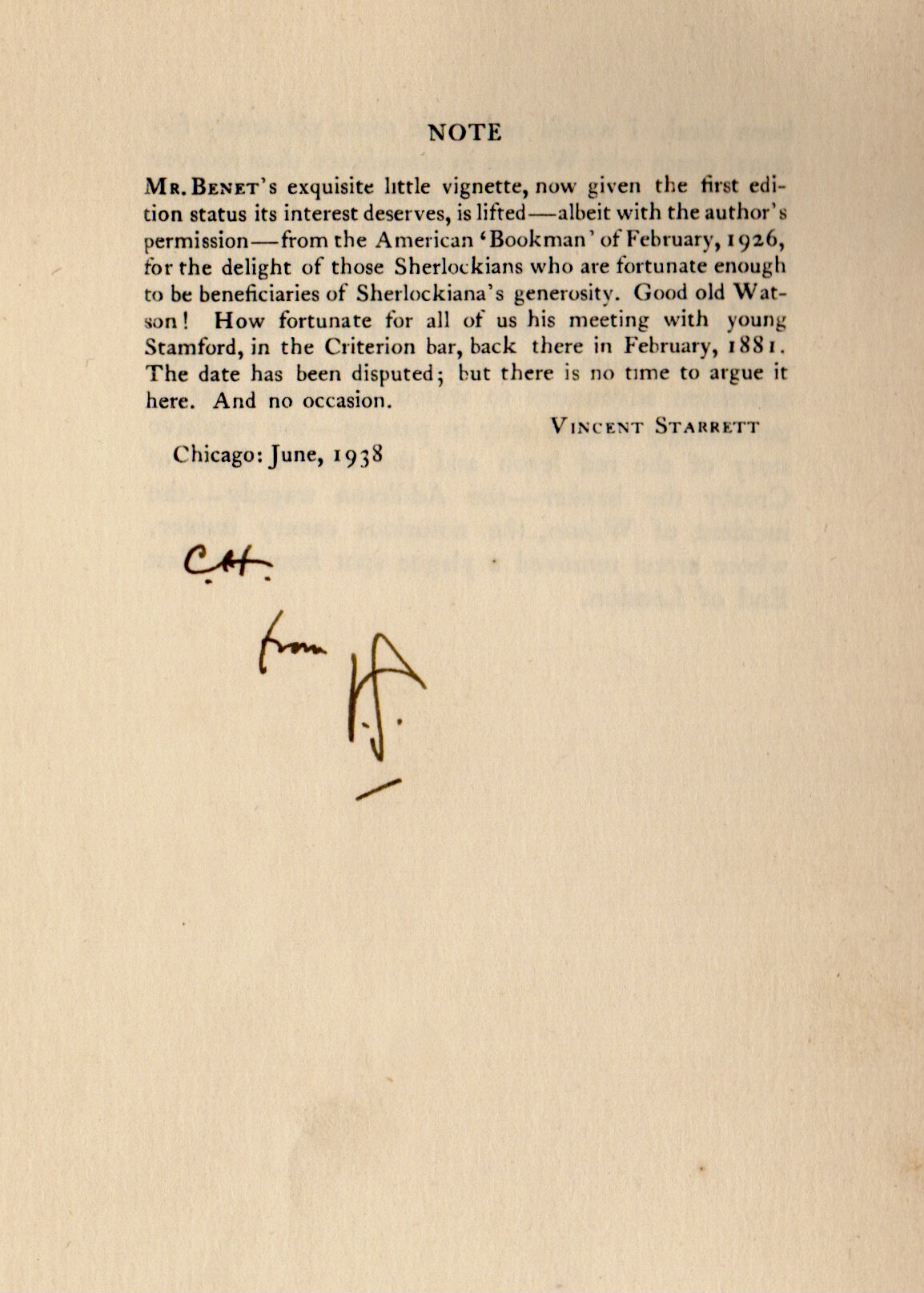
A full 60 copies were produced, perhaps because Benét’s reputation as a poet made this an item that would create great demand.
Benét’s little essay is taken from the February 1926 issue of The Bookman, for many years a home to Sherlockian discussion under editor Arthur Bartlett Maurice. One might expect Sherlock Holmes to be the object of Benét’s admiration, but we find that Good Old Watson is the subject of his tribute. “One cannot imagine feeling gauche or ill at ease in Watson’s presence.” Indeed.
Starrett knew Stephen Vincent Benét, but was better acquainted with his older brother, William Rose Benét. It was William who wrote the introduction to Starrett’s poetry anthology Autolycus in Limbo, which contains the first book publication of “221B.”
Dupin and another by Vincent Starrett. Christmas, 1941.
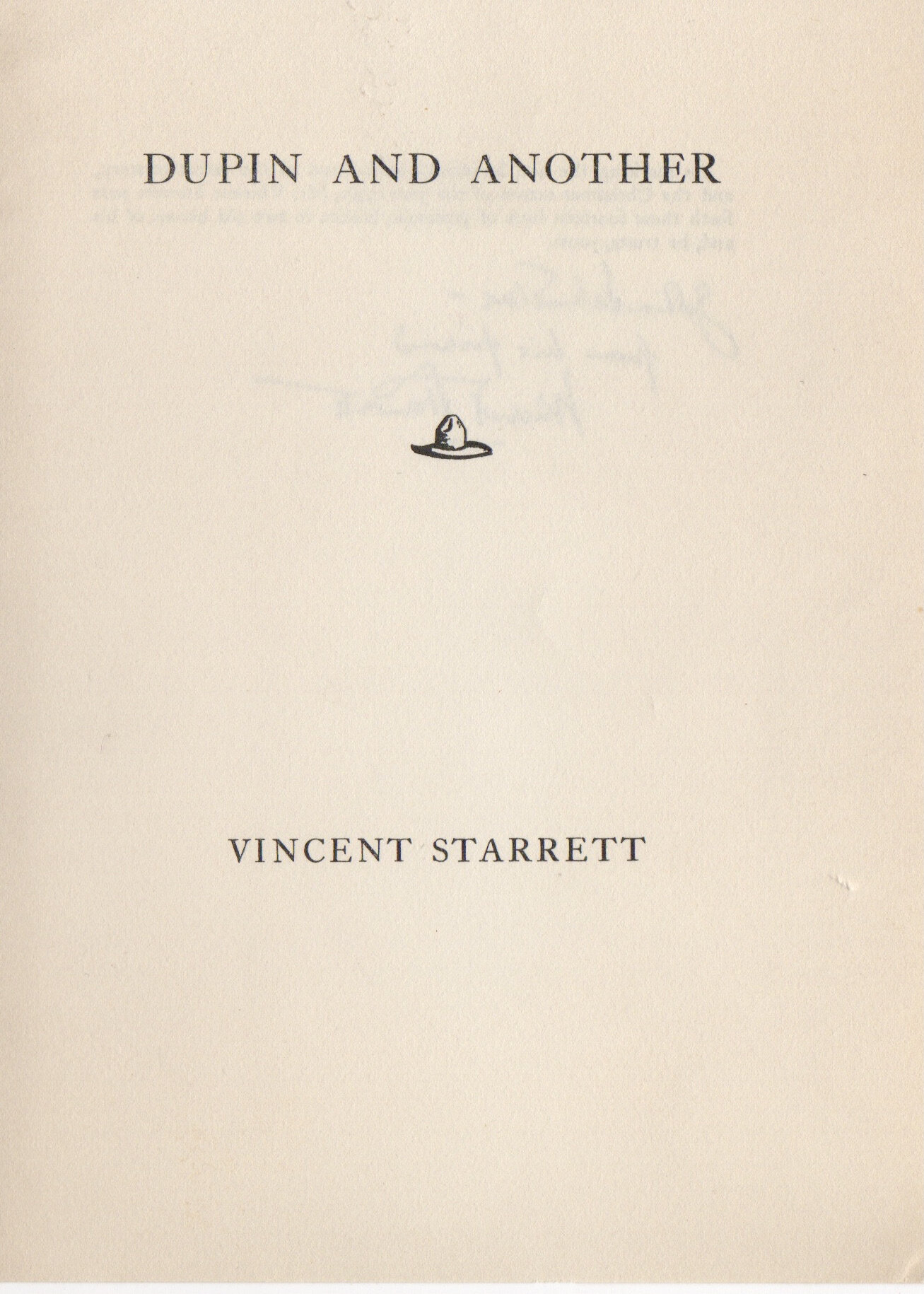
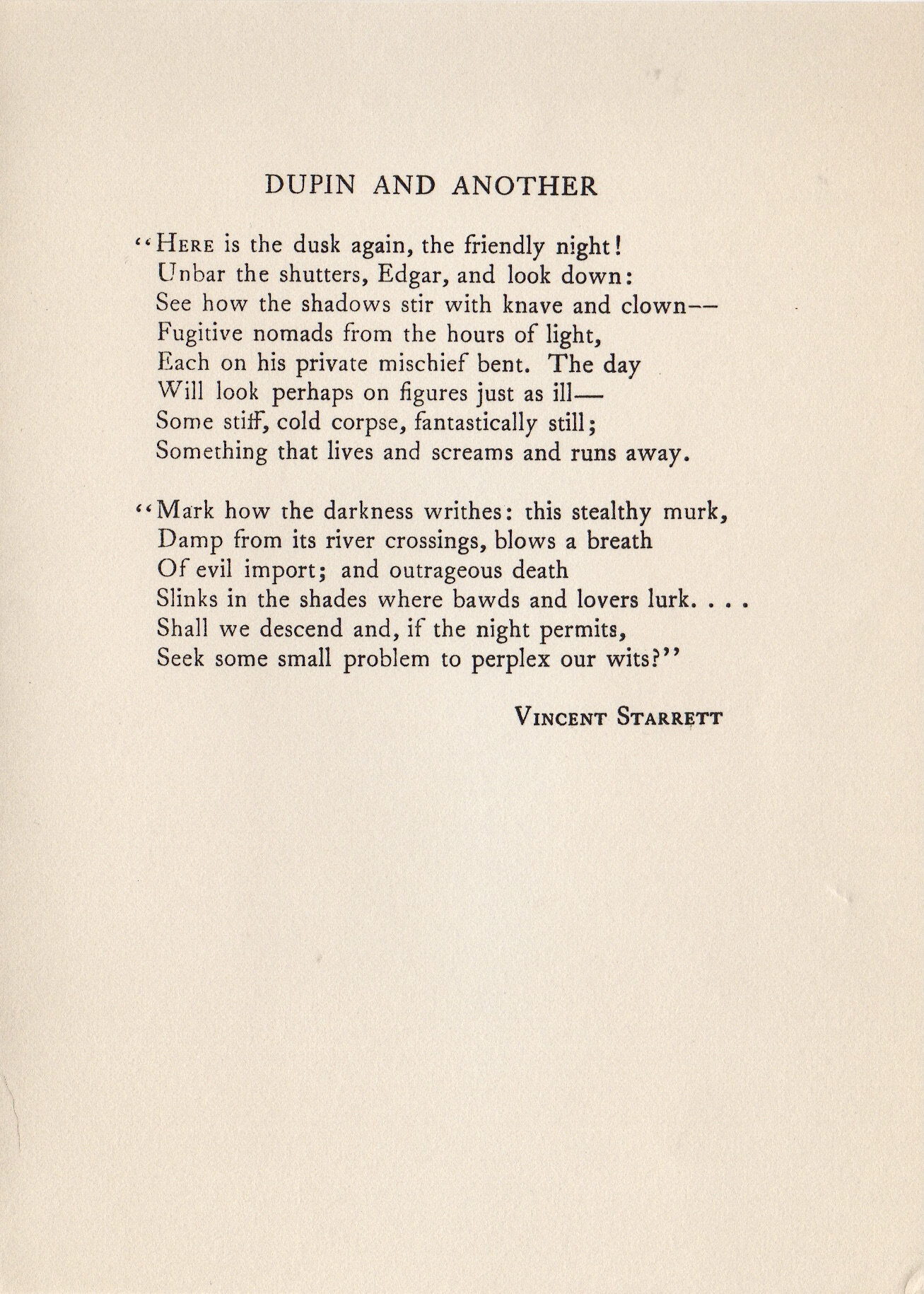
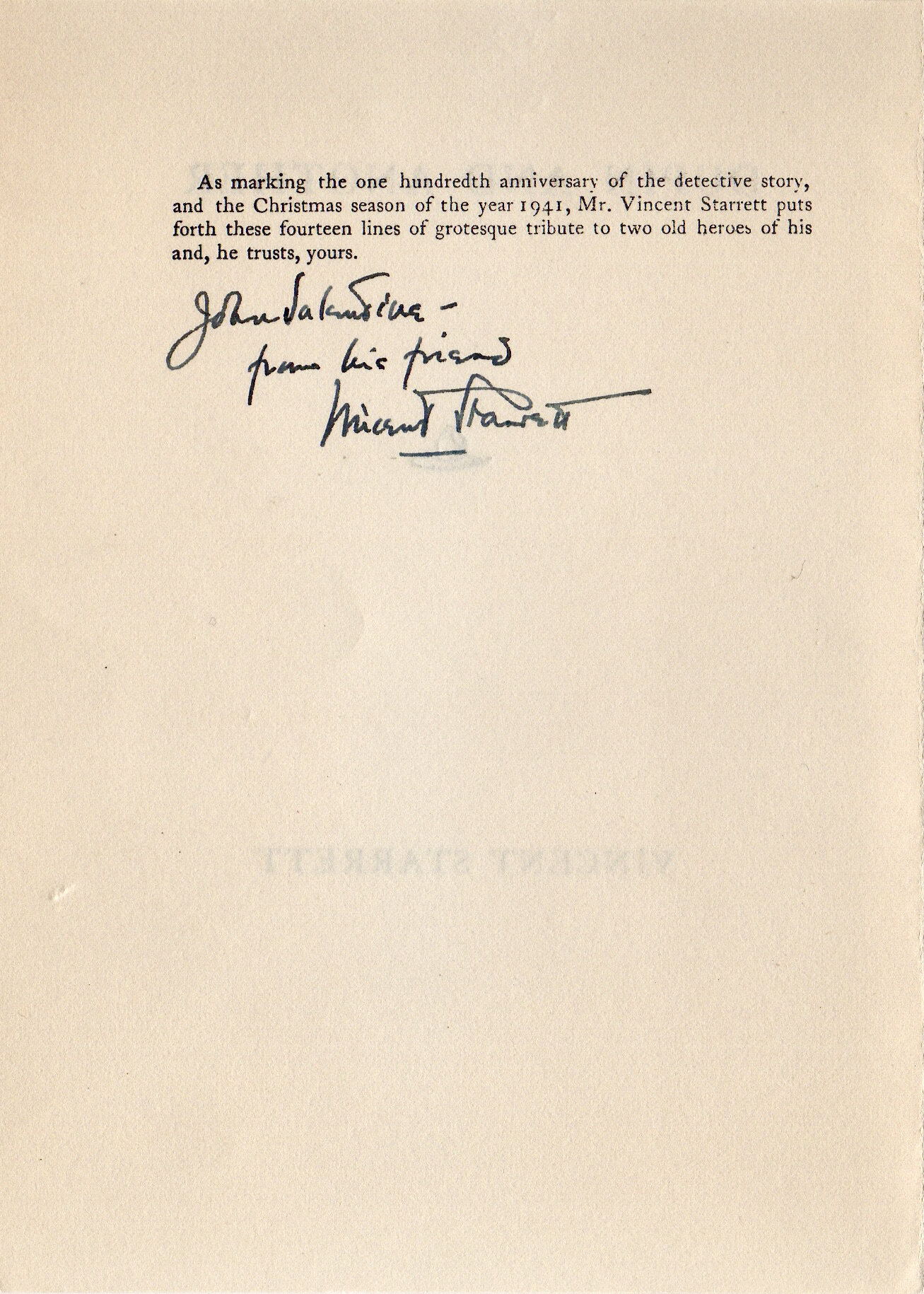
Although not listed as Sherlockiana in its title, the relationship beween Dupin and Holmes, like the relationship between their creators, makes them inseparable. I can find no record of how many copies were printed.
This copy is inscribed to John Valentine, a long-time Chicago collector whose interests overlapped with Starrett’s, particularly when it came to Stephen Crane. In fact, Valentine published the 1948 bibliography of Crane, compiled by Ames Williams and Starrett.
For many years, Valentine operated Chicago’s Abraham Lincoln Bookshop on North Michigan Avenue. Lincoln was just one of his collecting interests. Valentine was an early and eager Franklin Delano Roosevelt collector. At his death in 1955, it was said that Valentine’s collection was only second only to that of the holdings at Hyde Park.
A Message for Vincent Starrett by Christopher Morley, 1942.
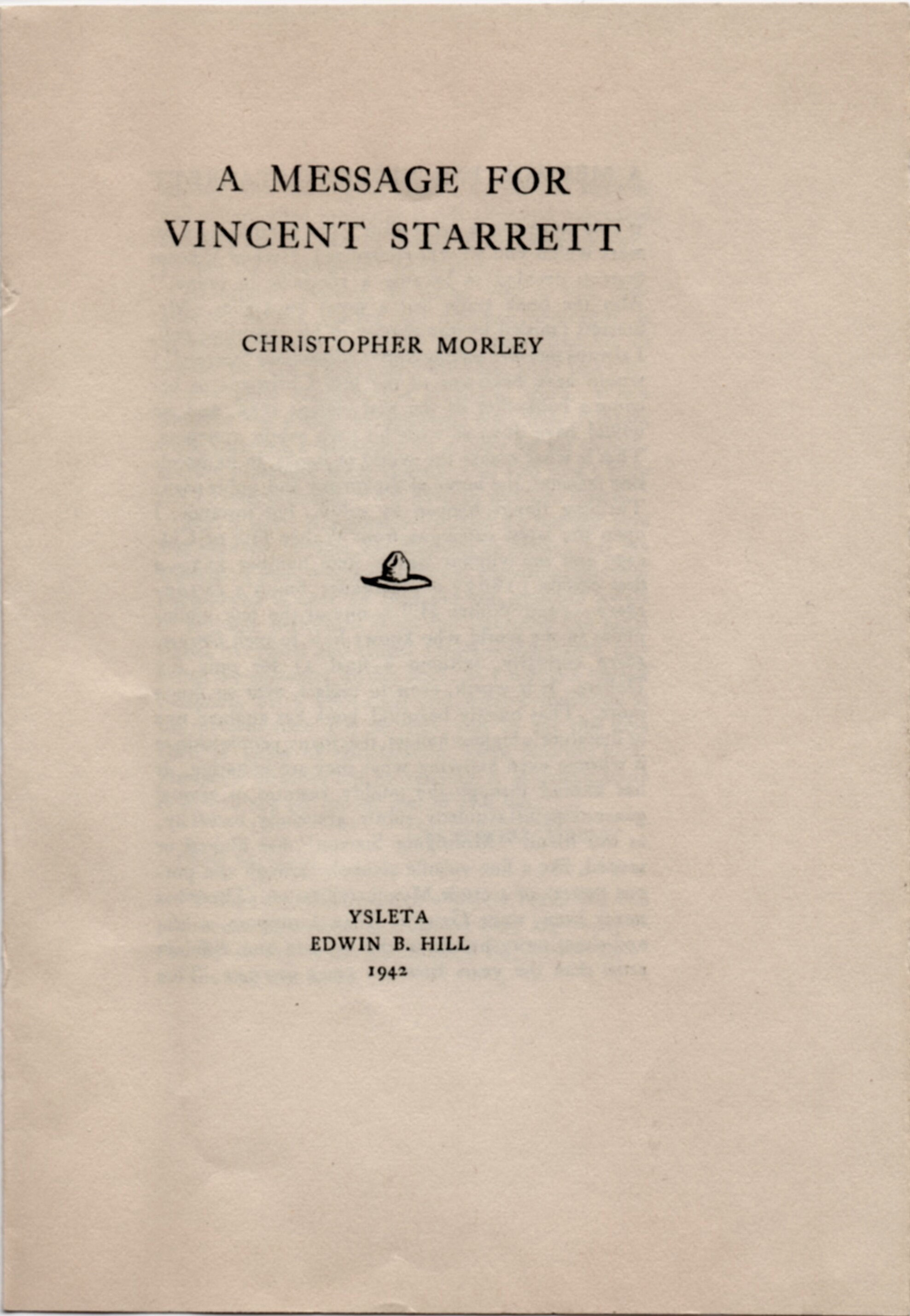
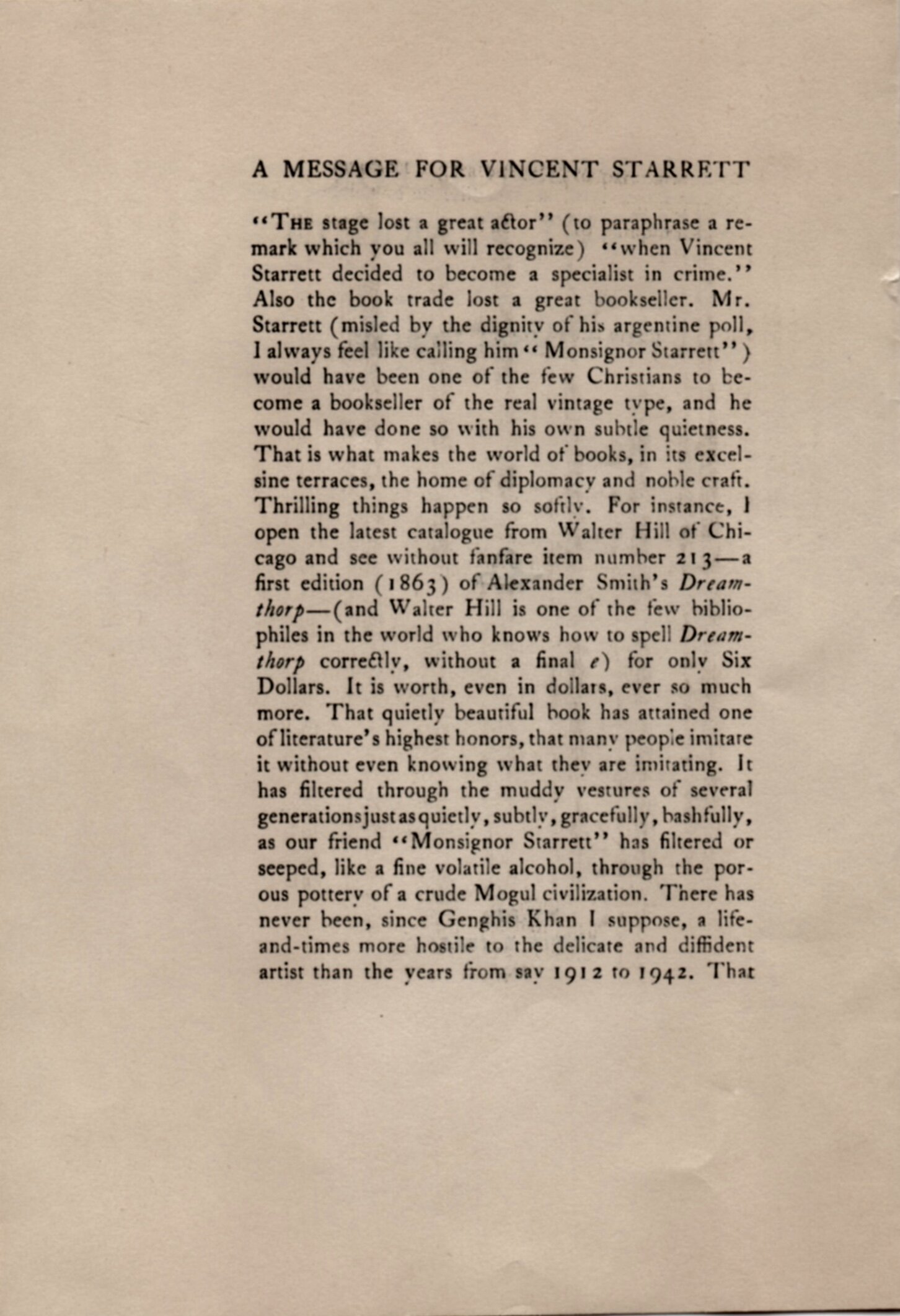
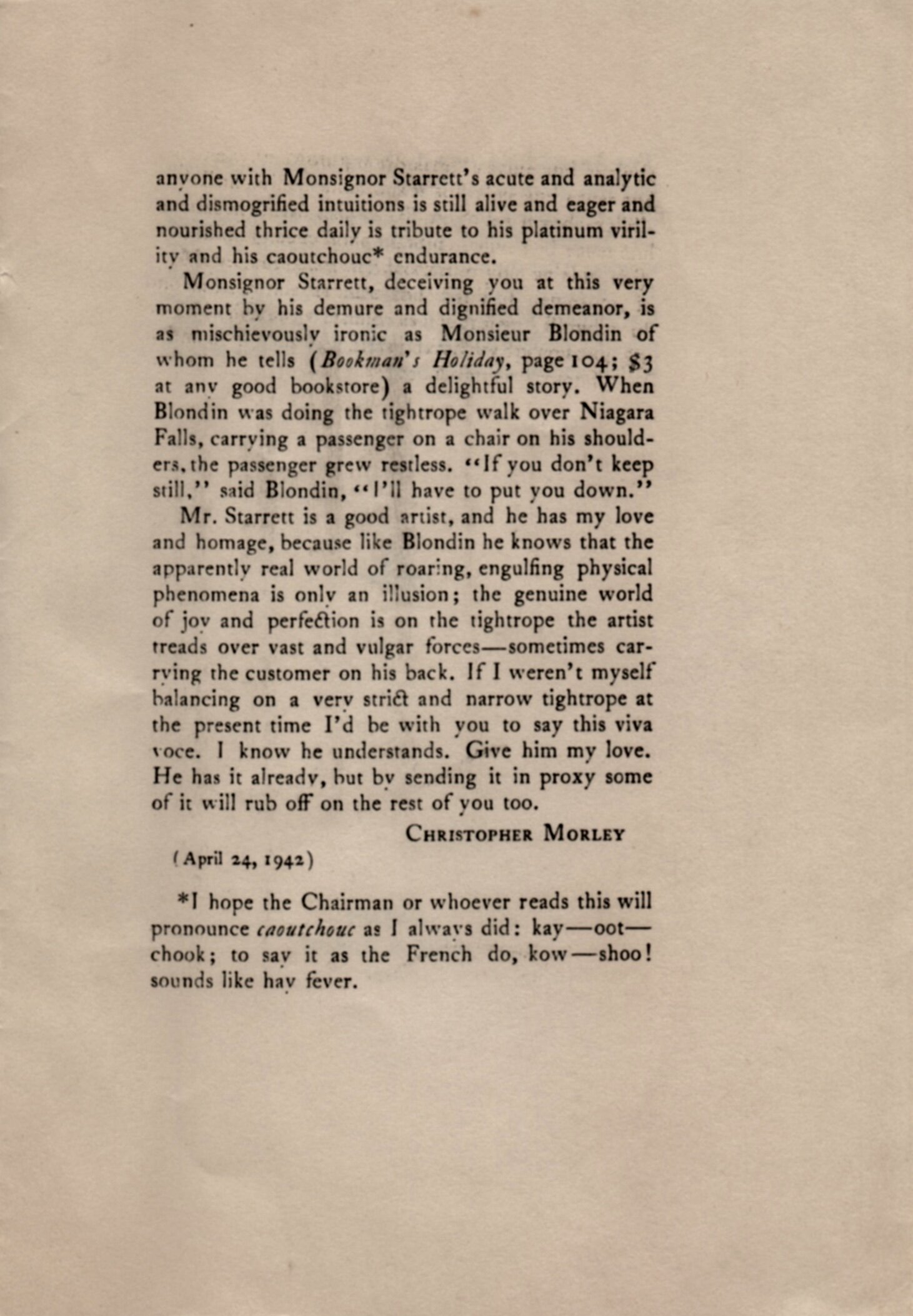
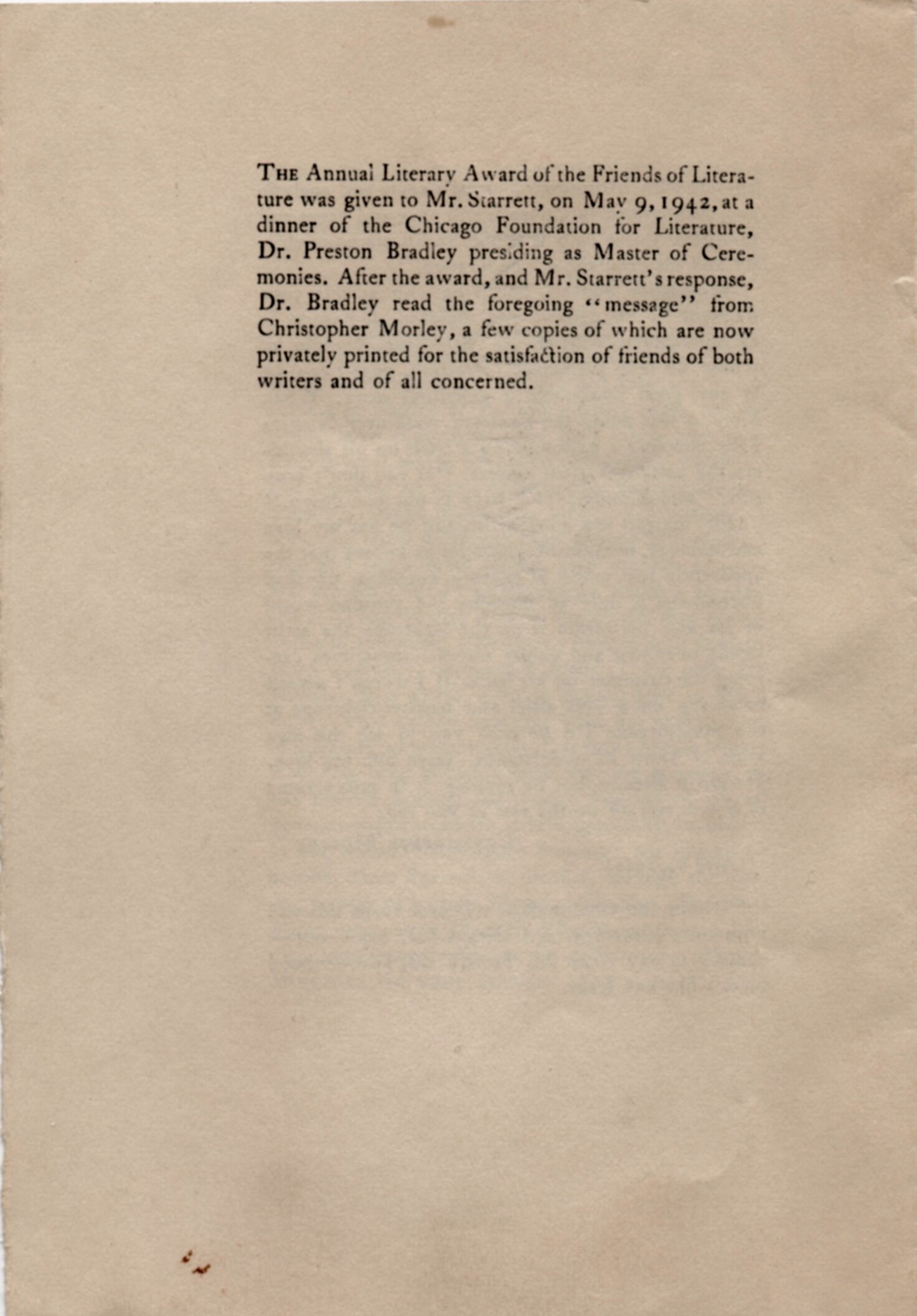
And now Christopher Morley.
Each spring, the Chicago Foundation for Literature held a banquet and honored one person with the Annual Literary Award of the Friends of Literature. On May 9, 1942, that award went to Vincent Starrett.
Christopher Morley was invited to speak. but could not make the trek from New York to Chicago for the event. Instead, he sent this message, which was read by the Rev. Preston Bradley, a well-known pastor and writer.
The message shows the warm and friendly relationship that existed between Morley and Starrett. In his pinball fashion, Morley wanders about much like Starrett would do in his bookish essays, touching on an odd volume by Alexander Smith, the art of bookselling, Genghis Kahn, and then pointing out Starrett’s “dismogrified intuitions,” not to mention his “caoutchouc endurance.”
It is all fun and game with words, until Morley gets down to this: “Give him my love. He had it already, but by sending it in proxy, some of it will rob off on the rest of you too.”
“A few copies” were produced. No telling how many that really means.
Sherlockiana: Two Sonnetts by Christopher Morley and Vincent Starrett. November, 1942
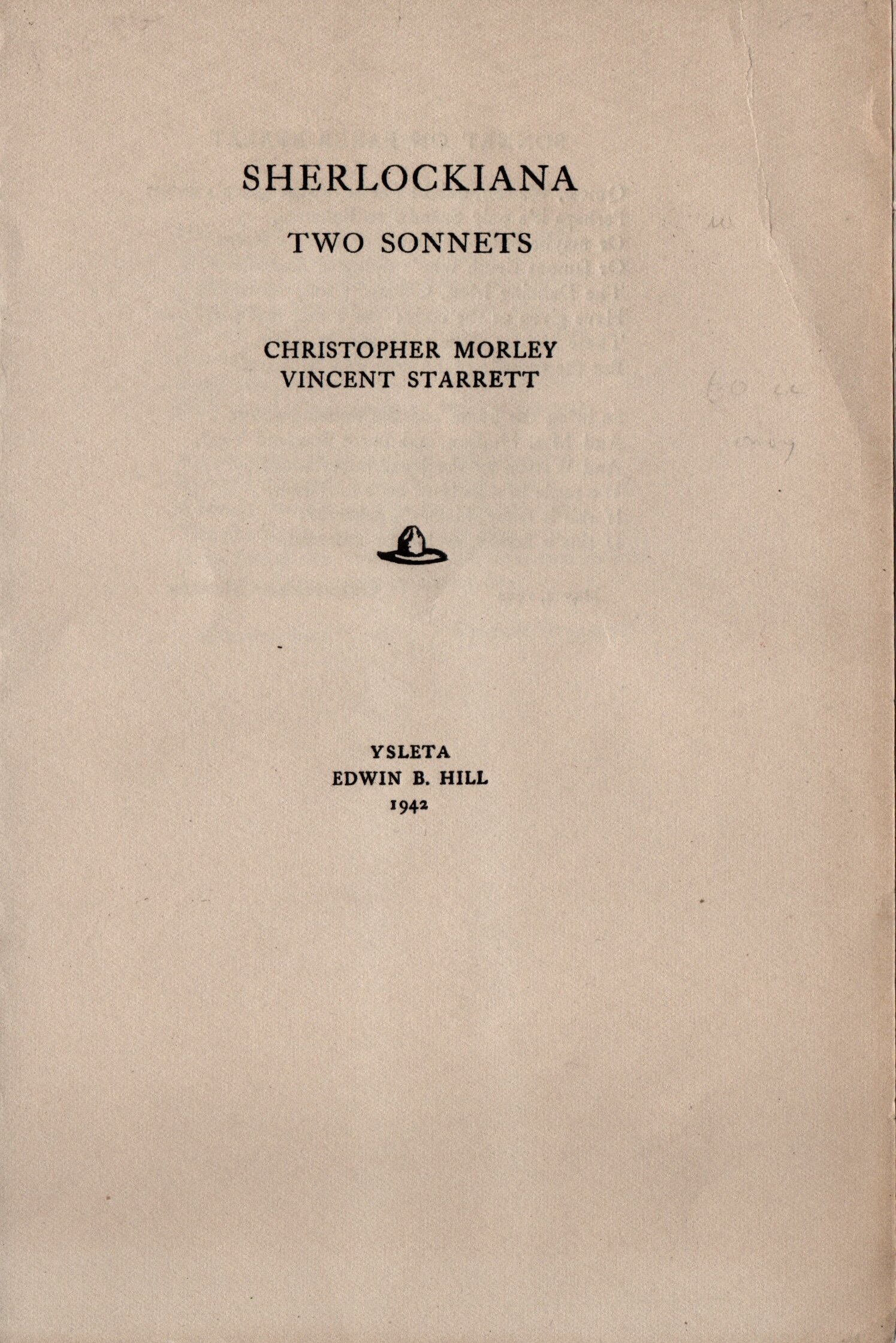
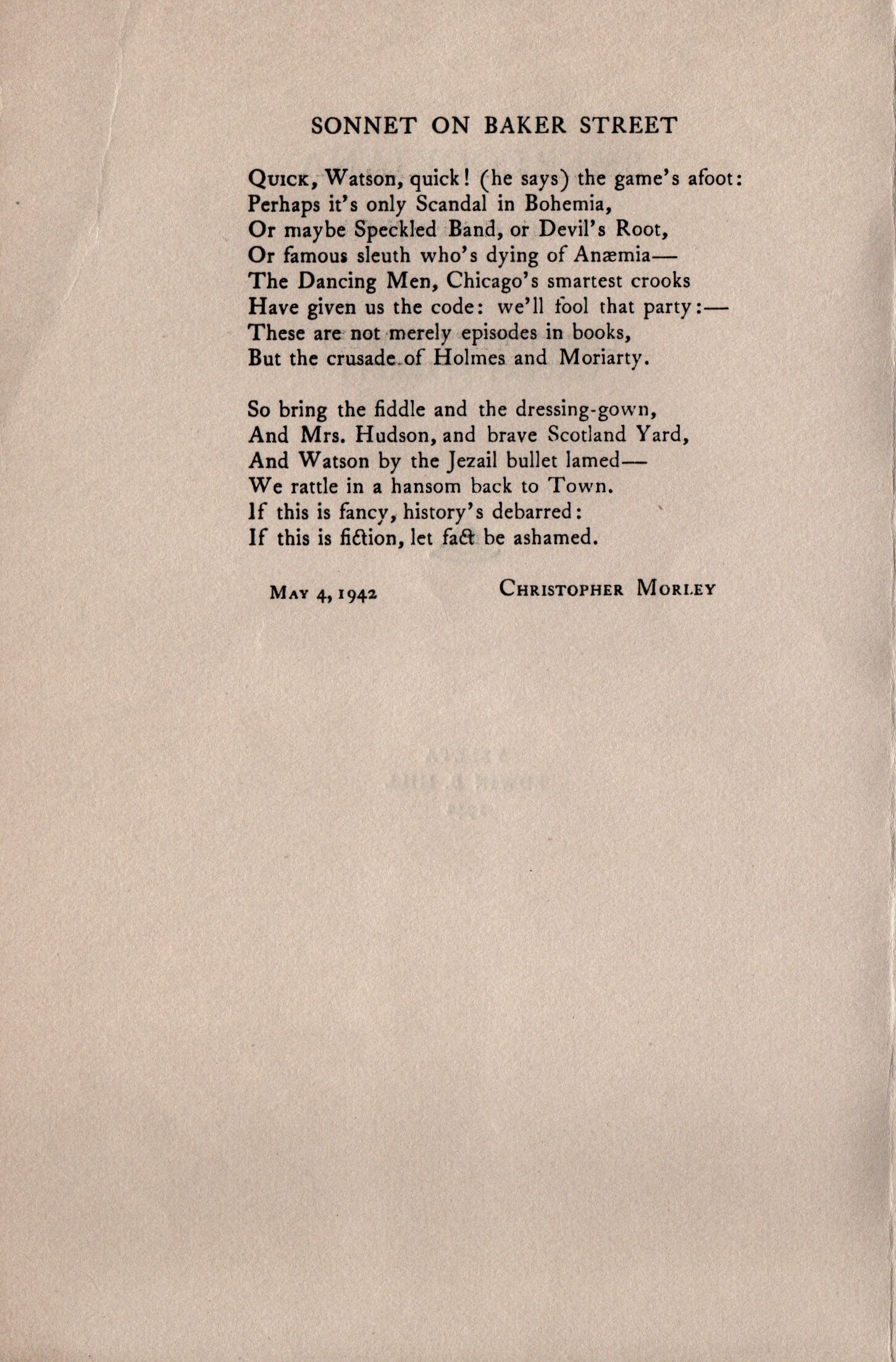
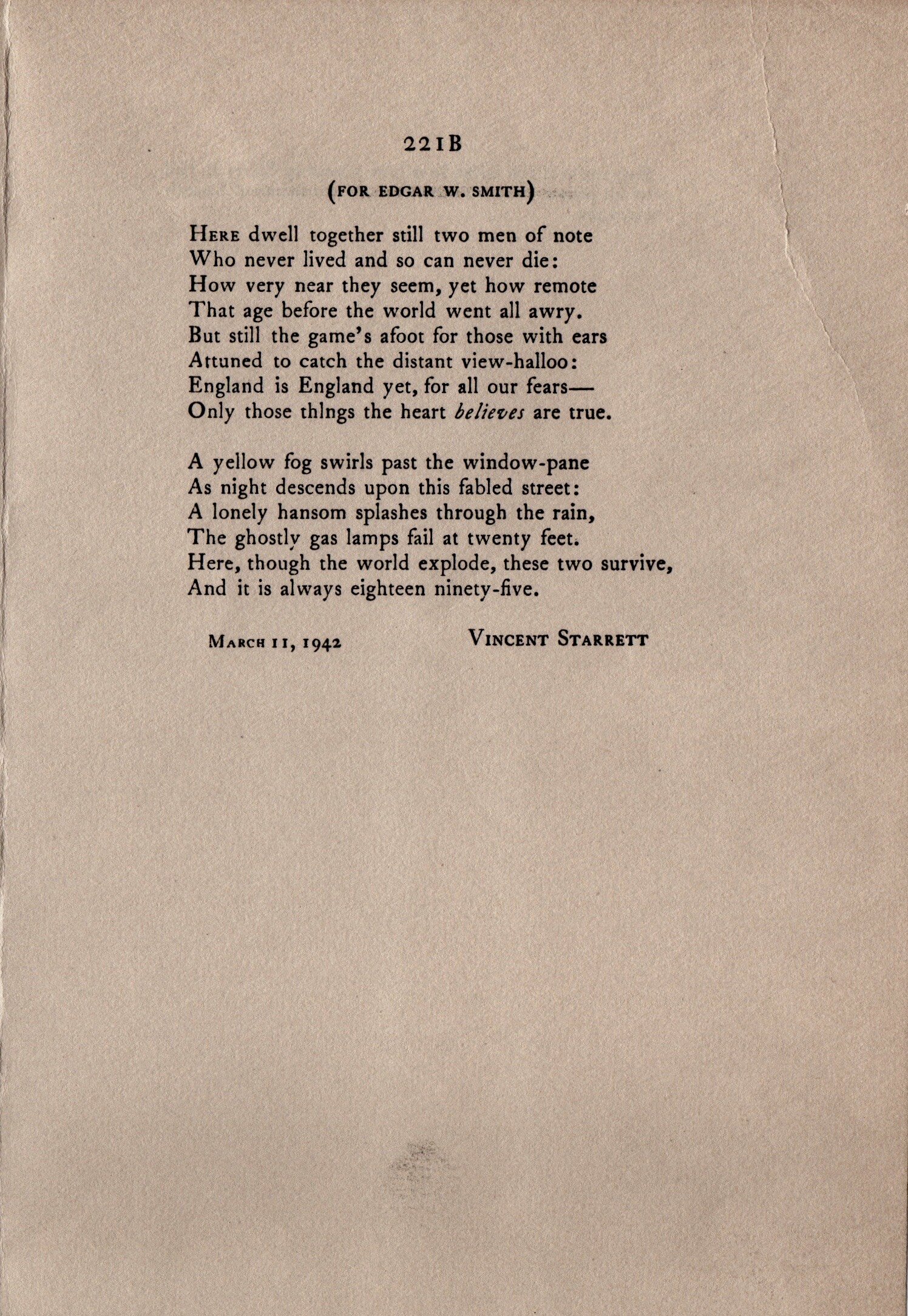
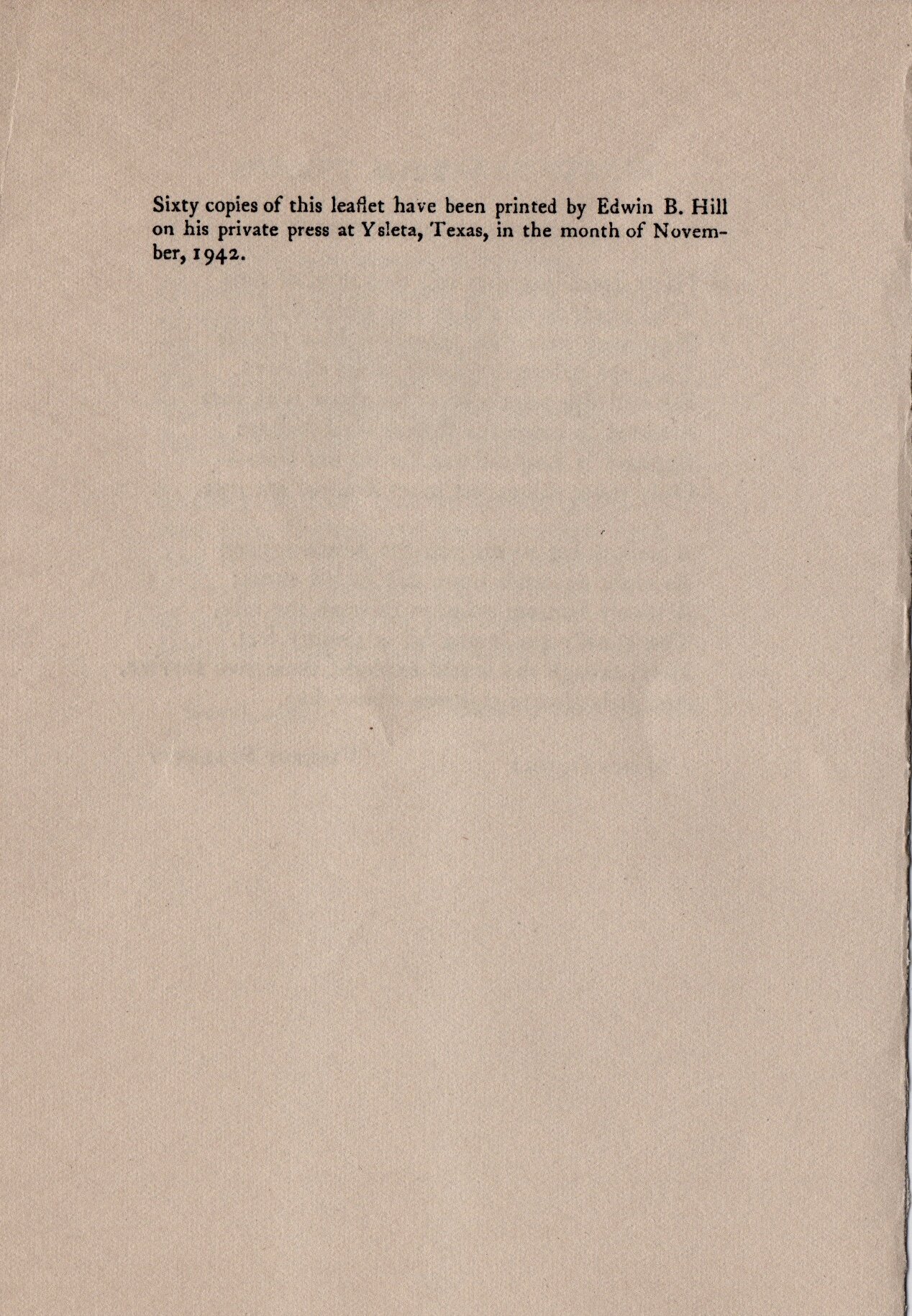
Morley again, and this time the result is explosive.
I’ve talked at great length about this little leaflet. If you haven’t read the blog post on this singular and most valuable of all Hill publications for a Sherlockian, then I recommend you click on this link and come back.
Hill printed a canonical 60 copies. Starrett used them as his holiday card.
Today, most are in libraries or hidden by collectors in their dragon hordes.
You can see more of my copy, plus the page proofs, here.
My wants list.
There are several Hill bibelots (a favorite Starrettian term) that I would love to acquire.
The first one Starrett had Hill print, Self-portrait, is from 1924 and is truly scarce. “There can’t have been any more than a dozen struck — or maybe twenty,” Starrett told Charles Honce for publication in A Vincent Starrett Library. The verse is easy enough to find in other publications, but the Hill version is Yeti-like in its availability.
Another rarity that would be great to have is the 1934 leaflet attributed to Starrett’s second wife, Ray Latimer, and titled Three Poems. There are hints of Ray’s writings in the holdings of the University of Minnesota library. Having this leaflet would allow us to better understand her abilities.
A couple of Starrett’s pieces were not Sherlockian and have been hard to locate. The Fellowship of Books celebrated Hill’s 50 years as a printer in 1934. The brochure also had two photos of Hill, which are rare in themselves. Three Poems for Edwin B. Hill (1942), Book Marker (1943) and Gleams and Flashes (n.d.) are attributed to Starrett and still on the loose.
I also need a few later Sherlockian leaflets:
Anthony Boucher’s On the Nomenclature of the Brothers Moriarty from 1941 and limited to 25 precious copies. The leaflet reprints Boucher’s letter to The Saturday Review of Literature.
Kenneth Fearing’s Sherlock Holmes Spends a Day in the Country from 1944.
Another starred item on my want list is Elmer Davis’ The Baker Street Irregulars: Constitution and Buy-laws from 1944. Only 30 copies were printed. Where are they now?
Max Beerbohm’s 1948 A Reminiscence of Sherlock Holmes. (I own a forged copy of this one, but that’s a story for which the world is not yet prepared.)
I suspect there are others which Starrett had a hand in preparing, but those are the ones I know about. If you see any of them, let me know.
A collector’s work is never done.
